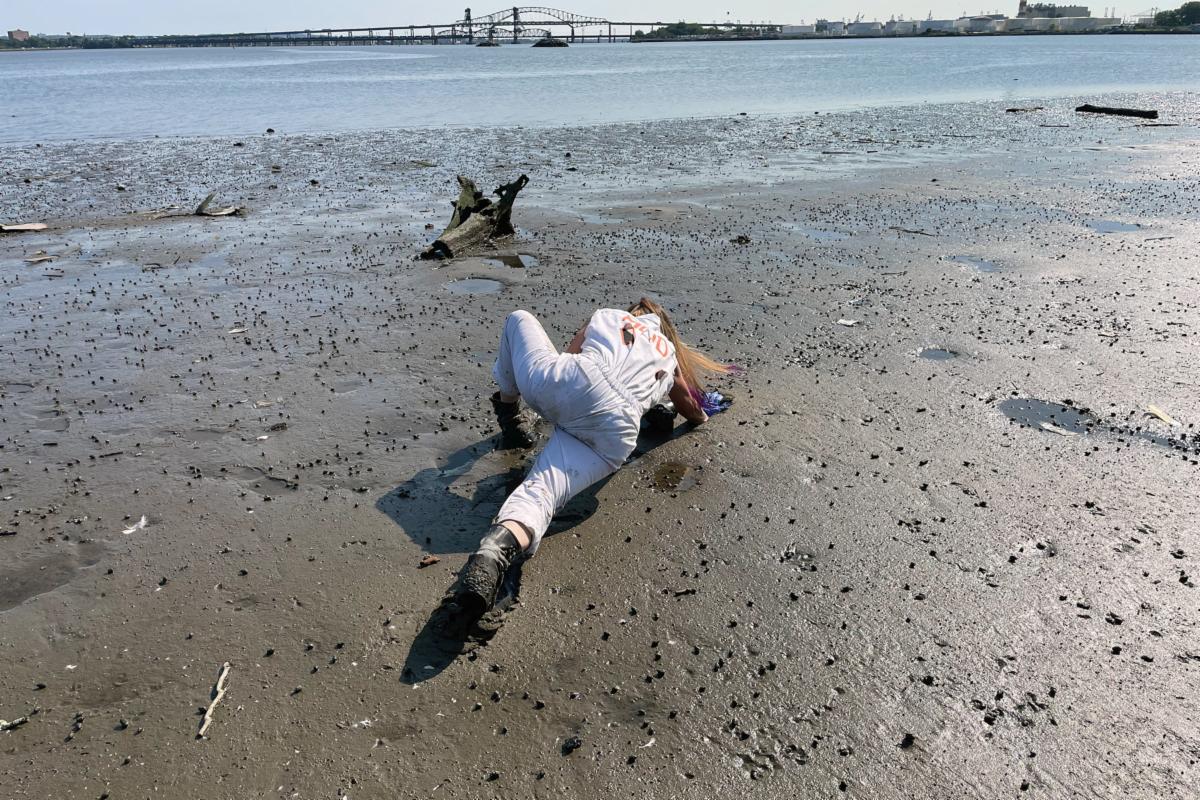andrea haenggi on the mudflats [photo credit Robert Neuwirth]
Artist
The artist andrea haenggi states, “Accessing these shorelines presented significant challenges, compelling me to navigate desire lines—unofficial paths forged by community intention—due to a lack of direct access. My journey highlights the struggle for connection not only by humans but also by the non-human beings and ecosystems that inhabit these spaces. Through my interactions with plants, sediments, and creatures—expressed through acts of dredging, dancing, and sculpting— I reveal the deep connections that exist between all living beings and emphasizes our shared responsibility for the land. Tidal mudflats—areas regularly submerged and exposed by tides—play a vital role in the intertidal zone. Unfortunately, these spaces have suffered from years of industrial pollution and sewage overflow, now designated as Superfund sites. I capture the intricate relationships between mud, sediment, and intertidal vegetation, exploring how these elements support each other and stabilize life at the boundary of land and water, despite their toxic legacy.”
This exhibition is the result of research undertaken by the artist as the inaugural Paul Robson Galleries Sci-Artist in Residence. A Paul Robeson Galleries initiative, the interdisciplinary Sci-Art Project connects departments and organizations across campus to explore the intersection of the arts and sciences. This residency provided a 24/7 studio, stipend and access to Rutgers people and resources to support the production of new artwork.
